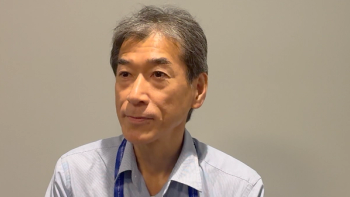
Photoacoustic Tomography: Ultrasonically Breaking Through the Optical Diffusion Limit
Photoacoustic tomography (PAT), a new imaging technique that relies on light and sound, provides in vivo multiscale nonionizing functional and molecular imaging without the radiation emitted by x-rays and CT scans, explained Lihong V. Wang, PhD, who led the team of developers at Washington University in St. Louis.
A wealth of data presented in posters, symposia, panel discussions, and plenary sessions at the 2012 meeting of the American Association for Cancer Research truly reflected this year’s theme, “Accelerating Science: Concept to Clinic.” The following is the first of a series of summaries of some of these presentations.
Photoacoustic tomography (PAT), a new imaging technique that relies on light and sound, provides in vivo multiscale nonionizing functional and molecular imaging without the radiation emitted by x-rays and CT scans, explained Lihong V. Wang, PhD, who led the team of developers at Washington University in St. Louis.
Lihong V. Wang, PhD
“PAT is the only modality capable of imaging across the length scales of organelles, cells, tissues, and organs with consistent contrast,” said Dr. Wang. The technique “has the potential to empower multiscale systems biology and accelerate translation from microscopic laboratory discoveries to macroscopic clinical practice.”
Dr. Wang said PAT may also hold the key to the earliest detection of cancer by in vivo label-free quantification of hypermetabolism, which he called “the quintessential hallmark of cancer.”
Dr. Wang is working with physicians at Washington University to evaluate PAT for use in identifying the sentinel lymph nodes for breast cancer staging (which may eliminate the need for surgical lymph node biopsies); monitoring early response to chemotherapy; imaging melanomas; and imaging the gastrointestinal tract.
“This technology is potentially a game changer, both in how we monitor cancer and in how soon we know it is there,” said Dr. Wang.
Newsletter
Stay up to date on recent advances in the multidisciplinary approach to cancer.




















































































